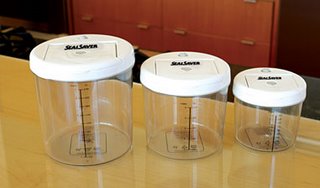 Finally – a gadget I really rate! If you’re a regular reader, you’ll know that I am not always a huge fan of gadgets in the kitchen. I know that a lot of you have limited storage space your own kitchens, and this means that owning a special great hunk of plastic and metal which is only useful for coring and peeling pineapples is an irritation rather than a help. Most kitchen tasks can be achieved with good knives; a really good grater
Finally – a gadget I really rate! If you’re a regular reader, you’ll know that I am not always a huge fan of gadgets in the kitchen. I know that a lot of you have limited storage space your own kitchens, and this means that owning a special great hunk of plastic and metal which is only useful for coring and peeling pineapples is an irritation rather than a help. Most kitchen tasks can be achieved with good knives; a really good grater also helps, and I will also admit the usefulness of a collection of measuring jugs and cups, and perhaps the odd silicone spatula or medical syringe.
I have welcomed another worthwhile gadget into regular use in my kitchen – and this happens very seldom. A few weeks ago, I was sent the SealSaver system: a trio of storage vessels in varying sizes with a cunning vacuum pump mechanism built into the lid. I agreed to review them, expecting to find them diverting and perhaps helpful. I wasn’t expecting to fall in love with them, though; and my whirlwind affair with these plastic cylinders isn’t over yet. I’ve been marinading, brining, storing stinky things and pumping, pumping, pumping as if my life depended on it.
SealSaver tubs allow you to store foods in a vacuum, which retards spoilage, especially if you then place the tub in the fridge. You suck the air out using a sort of bellows mechanism built into the lid – everything feels very solid and well engineered. A valve pops inside-out when there is a vacuum inside the tub, and no top-up pumping is necessary. The whole assembly clips apart and can be washed in the dishwasher (hurrah!); the bowl is also microwave-safe. Storing your bits and bobs in one of these in the freezer also eliminates freezer burn. And the bowls are also thoughtfully marked with liquid measurements.
A fan of the scientific process, I carried out some experiments involving raw, chopped onions, coffee grounds and washed salad, using my usual method (bowl, cling film, fridge) as a control and comparing with the same refrigerated ingredients in the SealSaver. (Not all in the same tub.) There’s definitely something in this vacuum storage malarkey – my elderly control onion stank of brimstone after a week, while my SealSaver onion stayed fresh and lively. Coffee retained its flavour and odour for a whole week even outside the fridge, and the salad wilted long after its friend in the bowl with the cling film.
So I’m absolutely sold on the SealSaver for storage. The moment, for me at least, the tubs really came into their own was when I started dabbling with vacuum marinading and brining.
If you marinade meat in a vacuum, some magic occurs whereby the marinade is pushed into the meat in a fraction of the time it would take at normal pressure. I’m not 100% sure of the science behind this – I’ve heard explanations which have taken in expansion in the meat’s pores (pores – surely not?), crazy speedy osmosis and a kind of reverse squashing effect from the low pressure. I am still none the wiser on how it works, but I can inform you that it does work, and it works like a dream. I was able to cut down on marinading time for chicken pieces by an eighth (an hour rather than overnight), and brined a whole chicken in the largest of the three to perfection in twenty minutes. Spare ribs took half an hour. (Recipes to follow in later posts – I’ll include marinading times for those of you without a vacuum-in-a-pot.) The meats were tender and moist, and had taken up the marinade beautifully.
This is more than convenient. It’s lunch-changing. How often have you picked up a recipe, thought: ‘My, that’d be great for supper,’ and then failed to cook because it needs marinading for four hours and the family is becoming fractious and grumpy through lack of food? You can reduce those four hours to half an hour if you buy your own tubs at the SealSaver website. I heartily recommend cramming a small chicken into the largest one.
